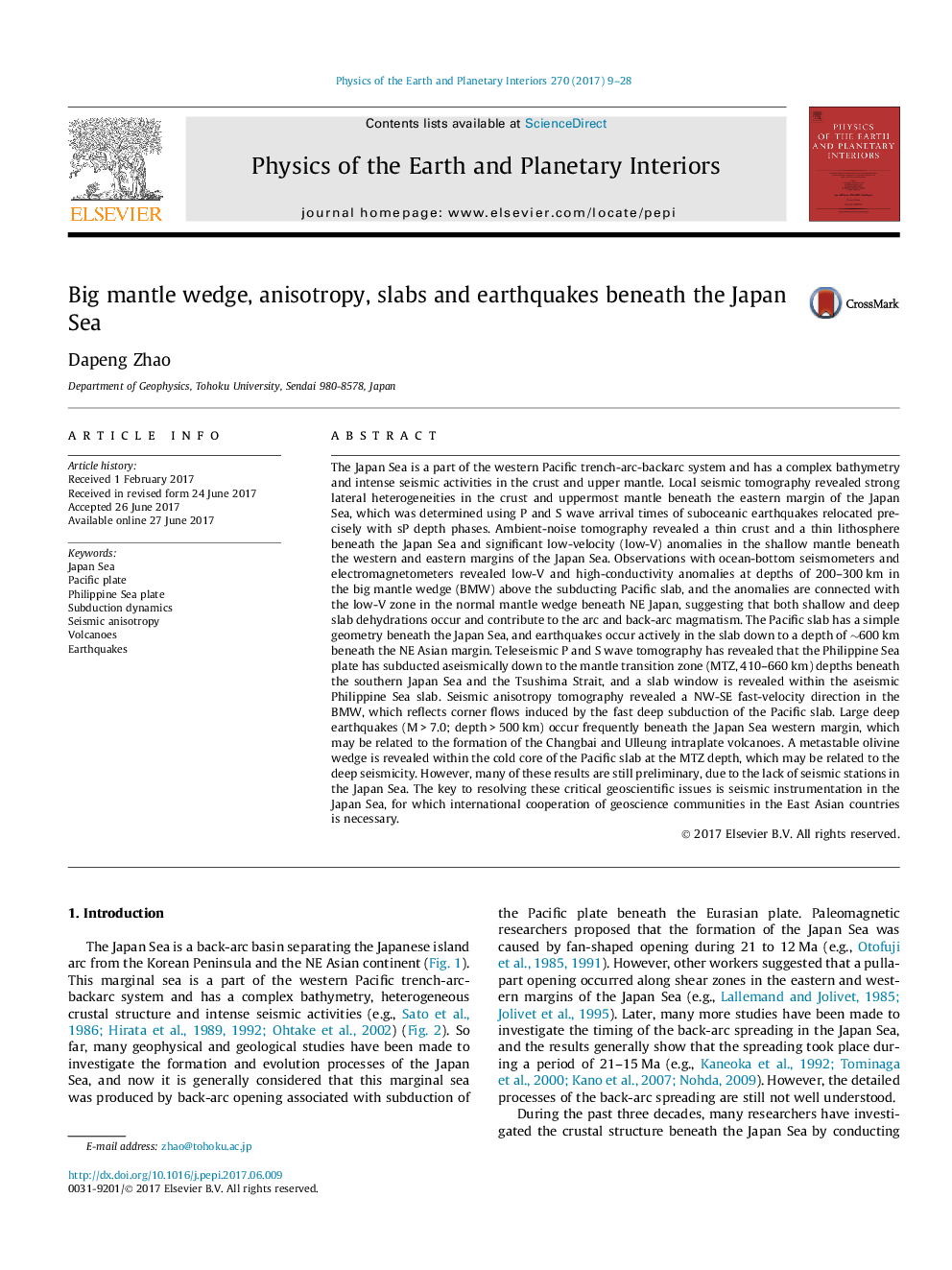| کد مقاله | کد نشریه | سال انتشار | مقاله انگلیسی | نسخه تمام متن |
|---|---|---|---|---|
| 5787276 | 1641470 | 2017 | 20 صفحه PDF | دانلود رایگان |
عنوان انگلیسی مقاله ISI
Big mantle wedge, anisotropy, slabs and earthquakes beneath the Japan Sea
ترجمه فارسی عنوان
گوه گوشته بزرگ، بی نظمی، اسلب ها و زمین لرزه ها زیر دریای ژاپن
دانلود مقاله + سفارش ترجمه
دانلود مقاله ISI انگلیسی
رایگان برای ایرانیان
کلمات کلیدی
دریای ژاپن، صفحه اقیانوس آرام جزایر دریای فیلیپین، دینامیک فرعی بی نهایت لرزه ای، آتشفشان ها، زمین لرزه،
موضوعات مرتبط
مهندسی و علوم پایه
علوم زمین و سیارات
فیزیک زمین (ژئو فیزیک)
چکیده انگلیسی
The Japan Sea is a part of the western Pacific trench-arc-backarc system and has a complex bathymetry and intense seismic activities in the crust and upper mantle. Local seismic tomography revealed strong lateral heterogeneities in the crust and uppermost mantle beneath the eastern margin of the Japan Sea, which was determined using P and S wave arrival times of suboceanic earthquakes relocated precisely with sP depth phases. Ambient-noise tomography revealed a thin crust and a thin lithosphere beneath the Japan Sea and significant low-velocity (low-V) anomalies in the shallow mantle beneath the western and eastern margins of the Japan Sea. Observations with ocean-bottom seismometers and electromagnetometers revealed low-V and high-conductivity anomalies at depths of 200-300 km in the big mantle wedge (BMW) above the subducting Pacific slab, and the anomalies are connected with the low-V zone in the normal mantle wedge beneath NE Japan, suggesting that both shallow and deep slab dehydrations occur and contribute to the arc and back-arc magmatism. The Pacific slab has a simple geometry beneath the Japan Sea, and earthquakes occur actively in the slab down to a depth of â¼600 km beneath the NE Asian margin. Teleseismic P and S wave tomography has revealed that the Philippine Sea plate has subducted aseismically down to the mantle transition zone (MTZ, 410-660 km) depths beneath the southern Japan Sea and the Tsushima Strait, and a slab window is revealed within the aseismic Philippine Sea slab. Seismic anisotropy tomography revealed a NW-SE fast-velocity direction in the BMW, which reflects corner flows induced by the fast deep subduction of the Pacific slab. Large deep earthquakes (M > 7.0; depth > 500 km) occur frequently beneath the Japan Sea western margin, which may be related to the formation of the Changbai and Ulleung intraplate volcanoes. A metastable olivine wedge is revealed within the cold core of the Pacific slab at the MTZ depth, which may be related to the deep seismicity. However, many of these results are still preliminary, due to the lack of seismic stations in the Japan Sea. The key to resolving these critical geoscientific issues is seismic instrumentation in the Japan Sea, for which international cooperation of geoscience communities in the East Asian countries is necessary.
ناشر
Database: Elsevier - ScienceDirect (ساینس دایرکت)
Journal: Physics of the Earth and Planetary Interiors - Volume 270, September 2017, Pages 9-28
Journal: Physics of the Earth and Planetary Interiors - Volume 270, September 2017, Pages 9-28
نویسندگان
Dapeng Zhao,
